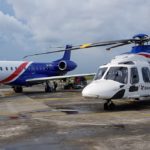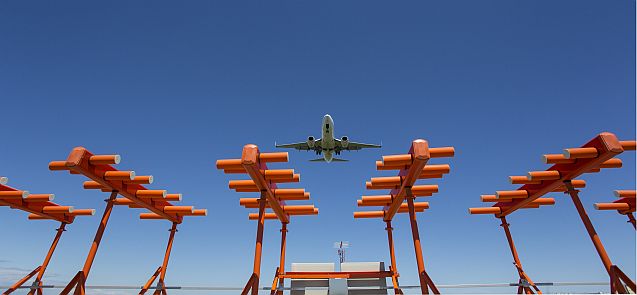
There are fears that if the Nigerian Airspace Management Agency (NAMA) continues to operate its existing navigational aids in the management of flight operations, the country’s airspace would become endangered.
This has prompted experts and stakeholders to call for immediate migration to satellite based navigation, modern radar coverage and effective aeronautical information system.
NAMA has over the years embarked on protracted projects to modernise some of its navigational aids, which are never completed and fully put into use.
Also, NAMA promised that it would complete the Aeronautical Information Service (AIS) projects, but every year, the date of completion continues to be extended.
NAMA has also been unable to fix the multilateration technology system, which it said would be used to monitor low flying aircraft in the littoral regions of the country (Niger Delta), where oil and gas helicopter shuttle service abound.
The agency had boasted few years ago that it had completed performance-based navigation (PBN), which consists of area navigation (RNAV) and required navigation performance (RNP), but talks in the industry is that such modern equipment has not been put into good use.
But sources in NAMA claimed that it is only foreign airlines that use the system because they have on-board, corresponding equipment in their aircraft to fully utilise the system, but even Nigerian carriers, which in recent years have acquired state of the art brand new aircraft, have not confirmed that they utilise NAMA’s modern navigational equipment.
The world has fully embraced Global Navigation Satellite Systems (GNSS), which benefits the aviation industry by enabling aircraft to fly direct from departure to destination, using the most fuel-efficient routes or to avoid complicated terrain at low altitude.
According to recent article by scholars at Stanford University, satellite navigation provides the flexibility to design new procedures that enable aircraft to fly closer together to increase the arrival and departure rates and fly continuous climb and descent operations to minimise fuel consumption, noise, and carbon emissions.
Few days ago, the Director of Air Traffic Services, NAMA, Mr. John Tayo, advocated for significant overhaul of the country’s radar system to ensure the safety and efficiency of domestic and international flights.
During his visit to the Total Radar Coverage of Nigeria (TRACON) site in Kano, Tayo expressed concerns about the current radar system, highlighting its obsolescence and the need for a modern replacement.
“The current radar system, despite advancements, is lagging behind global standards. Though it can still guarantee safety, it’s crucial to upgrade to a more advanced system for enhanced efficiency and reliability.This system is the first line of defense in monitoring aircraft movements, identifying potential threats, and coordinating rescue operations,” Tayo said.
Earlier in the year, NAMA had admitted that many of its navigational aids had become obsolete but would start the modernisation of the most critical of them all, communication in the airspace. It revealed that it had been grappling with the TRACON, which became inefficient over the years because some of its parts had become outmoded.
In a statement issued by NAMA in January, it said it would immediately tackle the intractable communication challenges in Nigeria’s airspace and assured the people that the myriads of problems plaguing communication between pilots and controllers would soon be a thing of the past.
The Managing Director of the agency, Ahmed Farouk, promised to immediately fix the communication problem and also declared emergency on power supply, as NAMA’s installations provided 24 hours service to ensure that aircraft flew safely in Nigeria’s airspace and therefore needed 24 hours power supply.
The agency disclosed then that it spent humongous amount of its revenues on diesel to power its generators and recently considered investing in solar systems.
“The communication architecture of Nigerian airspace is now broadened, addressing issues that were prevalent before. We are dedicated to ensuring seamless communication between pilots and air traffic controllers,” the Managing Director said.
He also disclosed that the federal government had acceded to the overhaul and modernisation of the communication architecture of the country’s airspace, but as 2024 comes to an end, there is no indication that the AIS project has been completed or the ailing communication system in the airspace cured.
What has really become prevalent and strident is the lamentation of the agency over remittances of 50 per cent of its revenue to the federal government, which it insisted must have to stop for it to make any headway in modernizing its navigational system.
Also, in January this year, the federal government approved the Nigerian Airspace Management Agency’s request to overhaul and modernise the communication architecture of the country’s airspace.
Two years ago, NAMA disclosed that it had started the rehabilitation of the Total Radar Coverage of Nigeria , safe tower upgrade as well as the completion of multilateration for low flying aircraft in the Niger Delta at the cost of about N45 billion.
The then acting Managing Director of the agency, Mr. Matthew Pwajok made this known then.
According to him, a breakdown of the amount to be spent included N23 billion to rehabilitate TRACON facilities across the country, N13 billion for the upgrade of Safe Tower project and the completion multilateration project at about $12.9 million, costing about N45 billion.
The question is, which of these projects has been completed at the end of November, 2024?
Meanwhile, the federal government has been urged to migrate the navigation aids of the Nigerian Airspace Management Agency to satellite-based systems to reduce flight delays, increase safety and security at the country’s aviation industry.
The call was made on Wednesday by the President of Airline Operators of Nigeria (AON), Abdulmunaf Sarina, at the 53rd Annual General Meeting (AGM) of the Nigerian Air Traffic Controllers’ Association (NATCA) in Kano.
Sarina, who is also the Chairman, Azman Airlines, said that the current terrestrial based Navaids were globally becoming obsolete.
Sarina further canvassed for the engagement of additional air traffic controllers across the country with adequate training, warning that failure to do this posed a threat to air safety due to the various human factors that could arise from such a trend.
Sarina also called on the management of NAMA to ensure the installation of Uninterrupted Power Supply (UPS) equipment to serve as alternate power sources at airports and stations.
In addition, he called on NAMA to immediately commence the development and rollout of a Wide Area Augmentation System (WAAS) in line with international best practices for the seamless transition to the Future Air Navigation System (FANS), whilst retaining the terrestrial based system as backup.
Sarina, who was also the Chairman of the occasion, expressed that it was necessary for the government to adopt proactive policies and take pragmatic steps to promote infrastructure investment, manpower development through training and re-training of Air Traffic Controller (ATC) personnel.
He said that with satellite based navigation and full embrace of GNSS, air traffic controllers will be able to effectively manage flight operations with greater accuracy, less human error with enhancement of greater safety in Nigeria’s airspace.
According to him, “Human factors in aviation have been identified as being responsible for about 50 per cent of major aircraft accidents. Tavigation his can be as a result of aviation personnel being subjected to adverse physical and psychological working conditions that can eventually lead to serious problems.”
Many in the aviation industry are curious to know the status of major projects embarked by NAMA in the last five years and also to know when it will fully migrate to satellite-based navigation.






